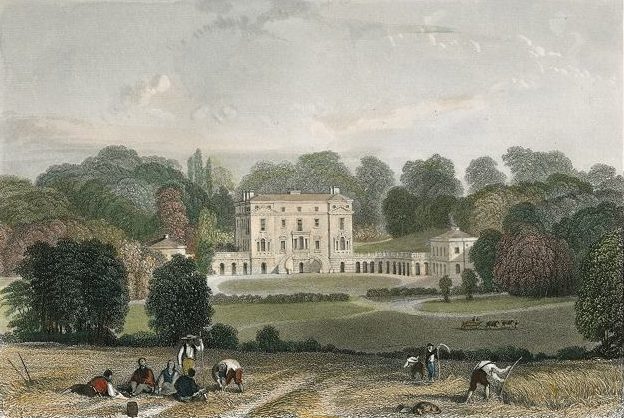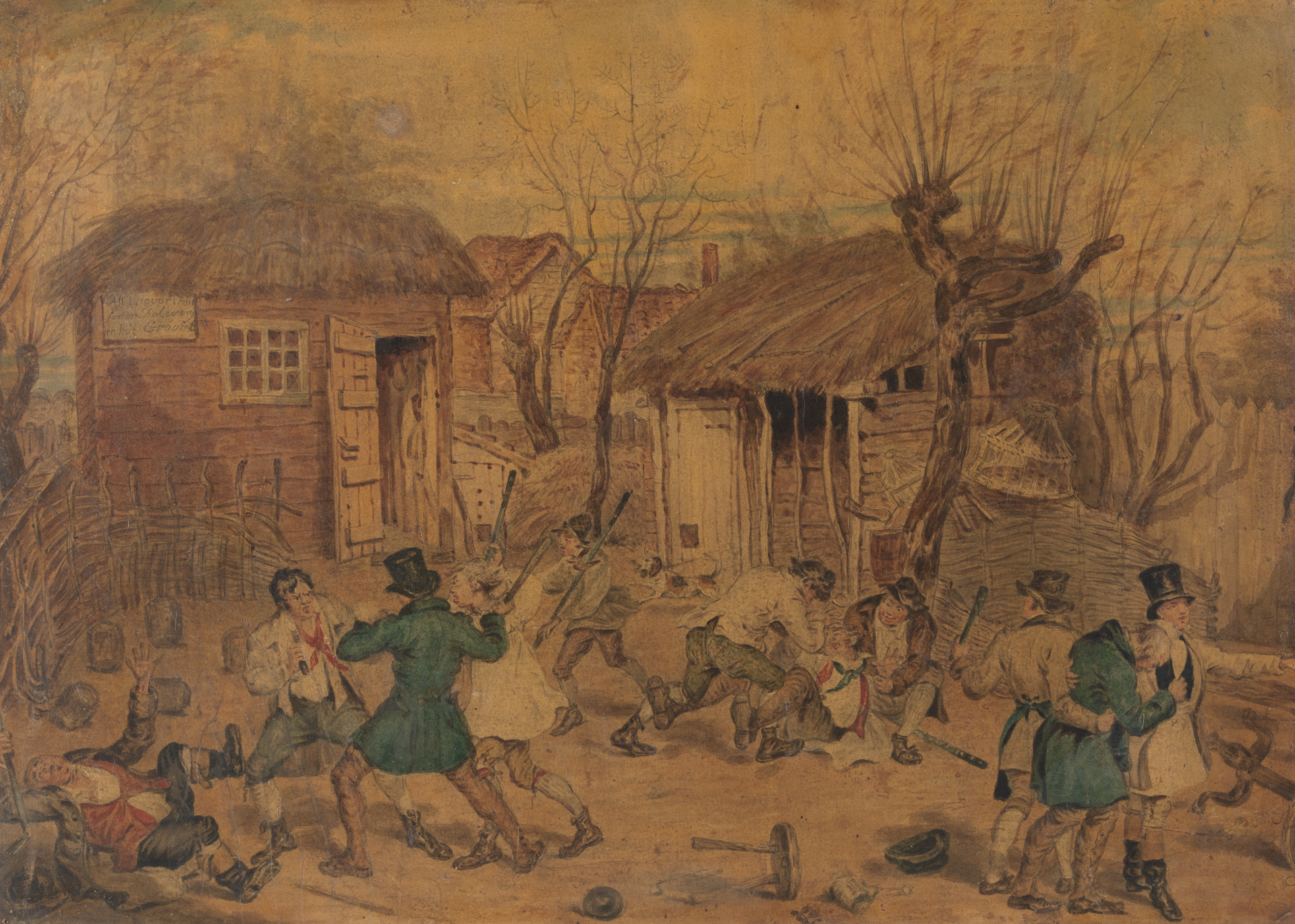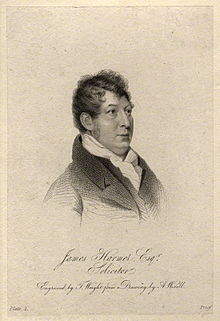Footprints and their meaning played a central role in my latest writing project, The Murder of Mary Ashford. The underlying issue at the trial that is central to the story was how much weight should be given to circumstantial evidence, especially when balanced against an alibi. As I sniffed around the archives looking for other similar cases, I came across the murder of a young gamekeeper, probably by poachers, for which Thomas Osborne stood trial at Kingston. There was plenty of evidence against him – but would it strong enough?
On Sunday 2 August 1818 Elijah Cox, a gamekeeper employed on James Tessier’s estate in Epsom, Surrey, failed to appear for breakfast in the servants’ quarters. When he did not come to church, nor to dinner,1 his fellow servants became increasingly concerned and two of them left the table to look for him. They knew that Eli, who was extremely conscientious, had spent the night at the farmhouse on the estate in order to get up in the small hours and look for poachers.
At the edge of the estate, at Crockingham Corner, they noticed a bent railing and soon afterwards discovered Eli’s body lying on his back on the other side, in Sir Gilbert Heathcote’s woodyard.2

He had been killed in a particularly horrible way: garrotted by inserting a stick through his silk neckkerchief and twisting, creating what seamen called a Spanish windlass. His right arm was broken and had a long, deep cut. There was a severe gash across the fingers, the little finger of the other hand was hanging by a thread and he had sustained a head wound. Eli’s pistol, the stock of which was broken, had been discharged.
There were plenty of clues. Lying a few yards from the body was an old sock made out of a hat. The marks of bloody fingers were found on a gate, and two knives were found nearby. The first assumption was that Eli was killed by a gang of poachers who had recently been plaguing the neighbourhood – the flick of a hare had been found strewn around the woodyard.
Eli’s body was carried to the laundry of his master’s house and where the surgeon, John Winslow Mayd, performed a postmortem.3

Soon after the murder, three men, Thomas and James Arnold and Thomas Osborne (described as a good-looking, fair-haired man, about 27) were arrested on suspicion of murder. The next day, Sunday, an inquest was held at the Hare and Hounds in Epsom. A fruit gardener told the court that he had heard the report of a gun at about five in the morning and someone cry out ‘Oh Lord’ twice. Thomas Page, who lived fifty yards from the scene of the murder, also heard the gun. At six o’clock he and his wife looked out of the window and saw their neighbour Thomas Osborne, a journeyman gardener, go into his house. Some of the witnesses said he had seen Osborne with a clasp knife like the one found at the scene but could not swear it was the same. One of them said that on the day after the murder he used a case knife. The jury brought in a verdict of Wilful Murder by some person or persons unknown.
The three men were examined by magistrates. Thomas Arnold, a reaper, told the magistrates that he had been visiting John Halliday, a shoemaker, and had intended to sleep at his mother’s house but got drunk and slept outside on a stack of oats, after which he went to his brother’s for breakfast. He was unexpectedly uncooperative when the magistrates asked him where he was on Friday night. He told them to mind their own business, ‘stating that wherever he might have slept on Friday could not in any way be connected with the inquiry about the murder. He was willing to give an account of himself from Saturday to Sunday, beyond that time he did not conceive he had a right to be questioned.’ He had thought it was a joke when told he was suspected of murder and that he was being taken before the magistrates to punish him for being drunk. His brother James denied any knowledge of the crime and said he spent the night at Banstead. He said his brother was a ‘wild rackety chap…[but] he was as innocent as a new born child of the murder and he hoped his brother was.’
Thomas Osborne had a cut on his forehead and scratches on his face and a loaded gun in his house. Eli’s powder flask bearing bloodstains was found near Osborne’s garden fence.
Osborne claimed that he had been asleep in his house and although the gunshot had woken him, it was normal to hear shooting in the area so neither he nor his wife thought much of it. Mr Doherty, a local gentleman, had given him valuable linen to look after and lent him the gun to safeguard it. The damage to his face was from a fall from an apple tree into a gooseberry bush. He offered to strip to prove that he had no marks of violence on him (none were found). Various witnesses gave inconclusive evidence, including his neighbour Thomas Page, who said he had seen him in his garden between 6 and 7 on the morning of the murder.
After a long and thorough conversation, the magistrates dismissed all the suspects. A few days later, three other men were arrested: John Jones, William Borer and William Jeffreys, who were known poachers (‘very extensive and daring’) but they were also discharged for lack of evidence.
Thomas Osborne was taken up again. A bloody and torn apron, waistcoat and pantaloons and a freshly washed but ripped-up shirt had been found hidden in his bed. He was carted off to Horsemonger Gaol in Surrey (south London).4
In August Osborne appeared at the coffee house in Epsom in front of seven magistrates. Seasoned barrister Peter Alley and solicitor James Harmer5, who appeared for him, told him not to speak. Some new evidence came to light. May, a police officer, said that Osborne was wearing socks similar to that found at the scene, and that one was more worn than the other. As a veteran of the navy, he would have been familiar with the knot used to make a Spanish windlass. The prisoner was sent for trial.
On 6 April 1819, Osborne appeared in front of Justice James Allan Park at the Kingston assizes.6
The trial excited ‘an uncommon degree of interest’ due to the barbarity of the murder. During the eight-hour trial, all the witnesses appeared again, including the neighbour, Thomas Page, now added some details to his evidence: on the morning of the murder, Osborne appeared to be sweating profusely and ‘in a great heat’. Later he fetched water and shut himself in his house; then he hung out his shirt and neckcloth to dry.

John Gurney, William Bolland and John Adolphus, all heavyhitters, prosecuted, but the defence was ‘extremely well drawn up’, in the opinion of The Times reporter, the brief probably prepared by Harmer. The defence case was that at six o’clock on the morning of the murder Osborne had gone into his garden to pick apples but had fallen from the tree and scratched his face in the gooseberry bush. Then he took the apples to his father’s house and stayed there half an hour, before returning home. He was vehement that he had had the ‘highest regard’ for Eli. The clothes under the bed had been there six or seven months – he had no use for them because he had put on weight. He admitted to wearing old hats as socks, but this was what many poor people did. He knew nothing of the bloody clasp knife or the powder flask.
Several witnesses gave Osborne a good character. It became clear that Page did not disclose the material part of his evidence until after a reward of £200 had been offered for detection and conviction of the murderer. That Osborne had been released after his first appearance in front of the magistrates but failed to flee was also in his favour.
The jury conferred for about five minutes and returned their verdict, Not Guilty.
With thanks to the Epsom and Ewell History Explorer site for the newspaper transcriptions of the case.
- During this period dinner was eaten mid-afternoon.
- Heathcote was an MP for Rutland (and also its High Sheriff).
- J.W. Mayd, 1761–1848.
- Horsemonger Gaol (or the New Gaol) was near Newington Causeway in Southwark.
- Harmer may have been the model for Charles Dickens’ creation Mr Jaggers in Bleak House. Dickens and Harmer were acquainted through the Newsvendors Benevolent Institution of which Harmer was the first president and Dickens the second. Harmer defended the Peterloo rioter John Lees in 1819.
- Park heard the notorious trial of conspirators charged with the abduction of Maria Glenn in 1817.

I have reason to believe that Eli Cox was an ancestor of mine. My great, great, great grandfather Edward Cox was born in Dorset. Somewhere between 1824 and 1829 he moved to Berkshire where in 1841 he is a gamekeeper at Dukeshill, Swinley Side, Winkfield, Berks. Edward had a younger brother Eli born in 1800 which makes him the right age. i have struggled to find any connection, there are no newspaper reports from Dorset that I can find and none of the others that I have mention where Eli was born. The gamekeeper connection and moving to the same area makes me wonder if it is two brothers. If you have any other information about Eli I would be grateful if you could forward it to me.